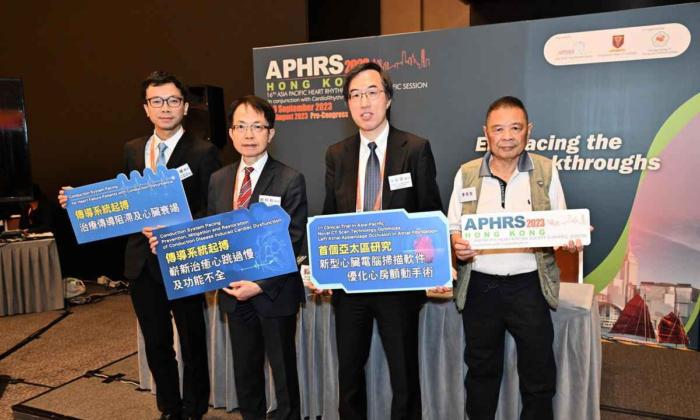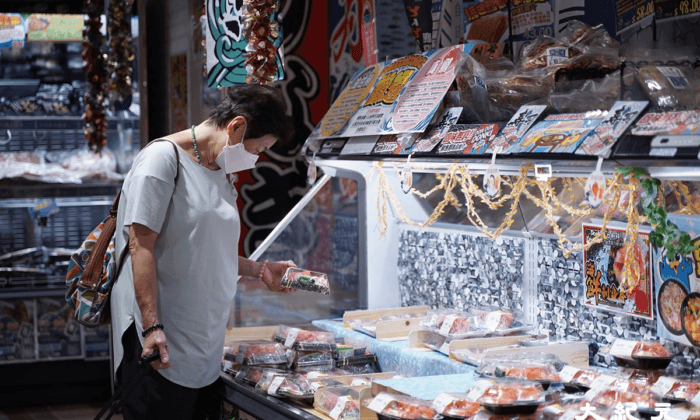The Hong Kong Consumer Council (HKCC) tested 25 water-soluble nail polish resin products and found that nearly 70 percent of the samples contained carcinogens prohibited by the European Union.
All samples are water-soluble resin nail polish (soak-off gel), which needs to be shined on UV light to make it more durable and sold at between HKD88 (approx. $11) and HKD238 (approx. $30).
The HKCC conducted a test for harmful substances commonly found in gel nail polish under European Regulation (EC) No 1272/2008 on classification, labeling, and packaging of substances and mixtures, including formaldehyde, N-nitrosamines, organic solutions including benzene, toluene, xylene, and pollutants commonly found in nail polish including Polycyclic aromatic hydrocarbons (PAHs), and plasticizers. It found nearly 70 percent of nail polishes detected at least one carcinogen prohibited by the EU.

Nail polish “Madam Glam” made in China tested 0.26 mg of benzene per kilogram. The short-term health effects of benzene exposure include headaches, dizziness, and tachycardia. At the same time, long-term usage may lead to an increased risk of cancer and affect the nervous and immune systems.
Formaldehyde was tested in 3 samples, namely “QUEENNY,” “GENTLE PINK,” and “HI GEL.” The detected amount ranged from 0.006% to 0.010%, which did not meet the requirements of the EU. Short-term health effects of formaldehyde exposure include difficulty breathing, asthma attacks, wheezing, allergic reactions, eyes, respiratory tract, and skin irritation. Long-term exposure can increase the risk of cancer and cause contact dermatitis.
In addition, toluene was tested in all samples, and long-term usage of toluene can affect the health of the liver, nervous system, and developing fetus. According to the EU Cosmetics Regulation, the highest intake of toluene is 25 percent. The amount detected ranged from 1.6 mg to 47 mg per kilogram, which was lower than the limit set by the EU. In addition, xylene was detected in 12 samples, with the tested amount ranging from 0.99 mg to 120 mg per kilogram, but the EU has not yet set a concentration limit for xylene.
The test also found Polycyclic aromatic hydrocarbons (PAHs), which are harmful to the respiratory tract and skin, in 16 samples. The EU lists anthracene, benzo(a) anthracene, and naphthalene as prohibited substances. The test results showed that 0.01 mg per kilogram of Benz (a)anthracene and 0.01 mg per kilogram of anthracene were tested in “First Street” and “FROM THE NAIL,” respectively. In addition, naphthalene was tested in 13 samples, namely “DGEL,” “ADORABLE” “First Street,” “Motive,” “NCLA Gelous,” “ORLY,” “Pedi Balance,” “JIN.B,” “ FIOTE,” “HOME,” “I'ZEMI,” “OPI,” and “Madam Glam,” with the amount ranging from 0.01mg to 0.20mg per kilogram, among which “HOMEI,” and “OPI” had the highest amount, both 0.20 mg naphthalene per kilogram, detected. The product information and test results of the above-mentioned harmful substances detected that do not comply with EU regulations have been forwarded to customs for follow-up.
Eight samples have no found substances prohibited by the European Union, including “Bio Seaweed Gel Natural Non-toxic Gel Nail Polish,” “BEHOLD Professional Gel Polish,” “Presto LEDGELBrush on Unlimited Color Gel,” “Sweet CandyCandy Gel Polish (Classic Professional),” “essieessie, gel-gel nail color,” which received the 5 points, the highest score. Among the products, “Presto LEDGELBrush on Unlimited Color Gel” and “essieessie.gel-gel nail color” were the most expensive (HKD238) among the samples, while “BEHOLD Professional Gel Polish” was the cheapest (HKD88), reflecting that the quality of the products may not be directly related to the price.
Dr. Chan Hau Ngai, Kingsley, a dermatologist of The Hong Kong Medical Association, said that many women tend to use a nail clipper to cut off dead skin that is jutting out during a manicure, but in fact, the hangnails can reduce the risk of bacterial infection on the fingers. Cutting off too much dead skin surrounding the nails will not only significantly increase the risk of exposing them to fungal infections but may even cause the risk of onychomycosis, tinea unguium, or paronychia. Moreover, since the polished nail needs to be closely shined on UV light to make it more durable, it may cause pigmentation on the skin near the nail, damaging the skin and even increasing the risk of skin cancer. Consumers are not recommended to do manicures frequently. Chan suggested that consumers apply sunscreen products on their hands before manicures, and also better moisturize the skin of the hands after being exposed to strong UV lights.
The test results showed no N-nitrosamines and plasticizers were found in all the samples.




